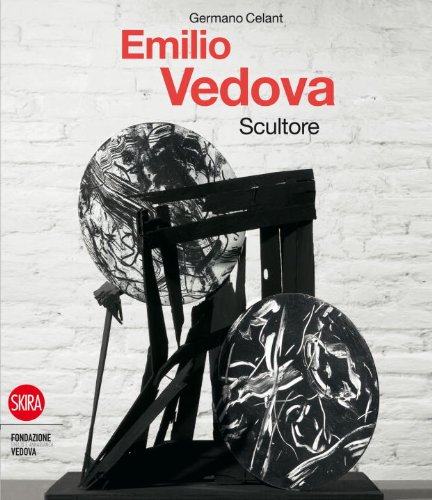آیا کتاب را خواندهاید؟
میخواهم بخوانم
در حال خواندن
خواندم
آیا کتاب را دوست داشتید؟
دوست داشتم
دوست نداشتم
Emilio Vedova Scultore
امتیاز محصول:
(هنوز کسی امتیاز نداده است)
دسته بندی:
Sculpture
ویژگیهای محصول:
کد کالا:
146250
شابک:
9788857206967
انتشارات:
موضوع:
Sculpture
سال انتشار:
2011
جلد:
Hardcover
تعداد صفحه:
240
طول:
28.6004
عرض:
24.6126
ارتفاع:
2.5908
وزن:
1719 گرم
قیمت محصول:
2,250,000 ریال
موجود نیست
درباره Emilio Vedova Scultore:
Emilio Vedova's artistic career began in Venice in the mid-1930s. He immediately felt the deep allure of grand Venetian painting and sculpture and, guided by the restless agitation and dynamic mobility of the baroque, was soon plunged into total and extreme three-dimensional involvement. The work in Emilio Vedova Scultore originates precisely from his feeling of being a living and breathing part of the beloved spaces he encountered along his way, inexhaustible sources of stimuli and incitement, which he transformed into volumetric works of sculpture, architecture, opera and theatre. In his 1958 exhibition in Warsaw, the geometrical work mounted on the ceiling of the Zachenta Palace confirms Vedova's interest in sculpture and his penchant for articulating spatial implications. This is followed in 1959 in Venice by the L-shaped teleri in the painting/ambient of Palazzo Grassi and then by his opera Intolleranza '60 (Intolerance '60) at the Teatro La Fenice, in collaboration with Luigi Nono. With the Plurimi (1961-1965), foreshadowed by the Rilievi (Reliefs, 1960-1964), Vedova removes the painting from the wall and installs it in the space of a fragmented, intersected set of surfaces somewhere between painting, sculpture and architecture. In Berlin he creates the Plurimi of the Absurdes Berliner Tagebuch '64, which found their natural development a few years later in Spazio/Plurimo/Luce (Space/Plurimo/Light), executed for Expo 1967 in Montreal. In this work, fourteen glass slides produced by the artist on Murano are projected simultaneously up to a height of 16 metres in the asymmetrical space by an equal number of large-format projectors. In 1977-1978, he works on the Plurimi/Binari from his Lacerazione (Laceration) cycle, where sliding, superimposed surfaces and black and white paintings squeezed into massive steel frames create images in continual transformation. In the same period he also dedicates himself to the Frammenti/Schegge (Fragments/Splinters) cycle - precarious, solitary and asymmetrical presences - and to the ... Cosiddetti Carnevali... (... So-called Carnivals...). Lastly, in the 1980s Vedova began his large installations of the Dischi (Discs) and Tondi - refound, vital and aggressive repossessions of space.
This book addresses the artist's entire career as a sculptor and includes a study of his series of models - his way of taking notes in three dimensions - which mark out his tireless daily quest for expression of the total work, towards which Emilio Vedova was inexorably drawn.





